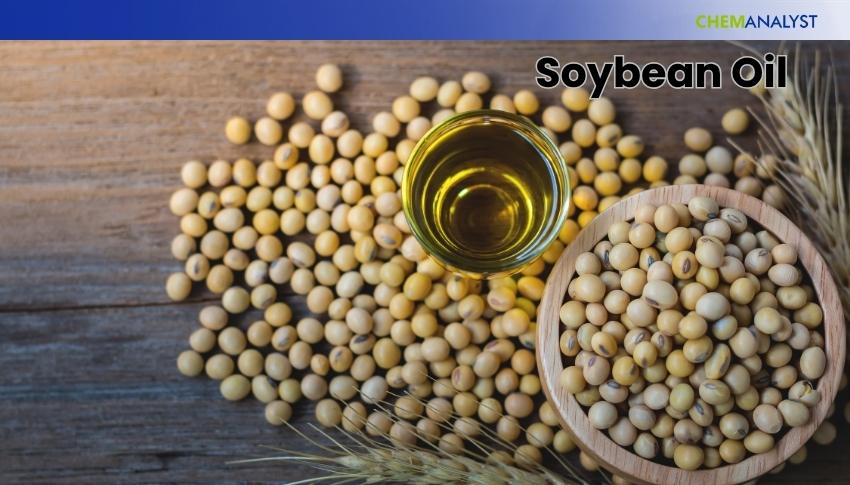Welcome To ChemAnalyst

U.S. prices for soybean oil are forecast to fall or stay weak up to July–August 2025, as soybean stocks increase and planted acreage decreases only marginally. The USDA saw June 1 soybean inventories rising 4% year over year, signaling strong supply for the 2025/26 season. Even with lower acreage, favorable weather in the U.S. is aiding strong crop growth. Global competition from palm and sunflower oils is also decreasing export demand. With USDA estimates keeping soybean oil prices flat at $0.46/lb and local inventories set to increase, bearish sentiment prevails in the market. Analysts expect minimal room for upside unless sudden disruptions occur.
U.S. soybean oil prices are expected to face downward pressure through July and August 2025, following the latest USDA reports which point to larger-than-anticipated soybean stocks and only a modest reduction in planted acreage. The confluence of ample domestic supply, favorable crop conditions, and intensifying global competition from other edible oils is expected to weigh heavily on soybean oil price trajectory in the near term.
According to the USDA’s June 28 Grain Stocks report, soybean stocks as of June 1 stood at 1.008 billion bushels, reflecting a 4% increase compared to the same period last year. The build-up in carryover stocks implies a stronger-than-expected supply base heading into the 2025/26 marketing year. While this may support crush volumes in the short term, it is likely to cap any significant price rallies for soybean oil, especially as market fundamentals remain broadly bearish.
Simultaneously, the USDA’s June Acreage report estimated planted soybean area for the 2025 season at 83.38 million acres—down from 87.1 million acres in 2024, representing a 4.2% year-on-year decline. However, analysts note that this reduction was smaller than the market had anticipated, softening the bullish implications of the acreage cut. With supportive weather conditions in major Midwest growing areas further improving yield potential, the acreage reduction is not likely to significantly reduce soybean oil supply in the next couple of months.
Additionally, USDA's most recent World Agricultural Supply and Demand Estimates (WASDE) kept the soybean oil price projection firmly on the downside side throughout, emphasizing market stability expectations at lower levels. U.S. domestic soybean oil ending stocks are also expected to rise modestly, further supporting a bearish picture.
Adding to the pressure, global competition in the vegetable oil market is intensifying. Palm oil production in Malaysia and Indonesia has recovered steadily in the first half of 2025, while sunflower oil output from the Black Sea region remains strong. These trends are drawing importers away from U.S. soybean oil, particularly in key Asian and African markets.
Given these events, analysts project soybean oil prices to drift lower or stay in a range throughout late August, except for any surprise geopolitical shocks or significant weather conditions. Although the summer season normally is prone to greater volatility on account of thin trading volumes, prevailing macroeconomic and agronomic factors imply limited upside.
As a whole, the combination of higher-than-anticipated soybean inventories, firm yield prospects, and deteriorating export competitiveness indicates that the U.S. soybean oil market is beginning a soft pricing cycle for the mid-summer season. Market participants will remain attentive to USDA crop progress reports and export demand indicators for any changes that might modify the prevailing scenario.
We use cookies to deliver the best possible experience on our website. To learn more, visit our Privacy Policy. By continuing to use this site or by closing this box, you consent to our use of cookies. More info.
